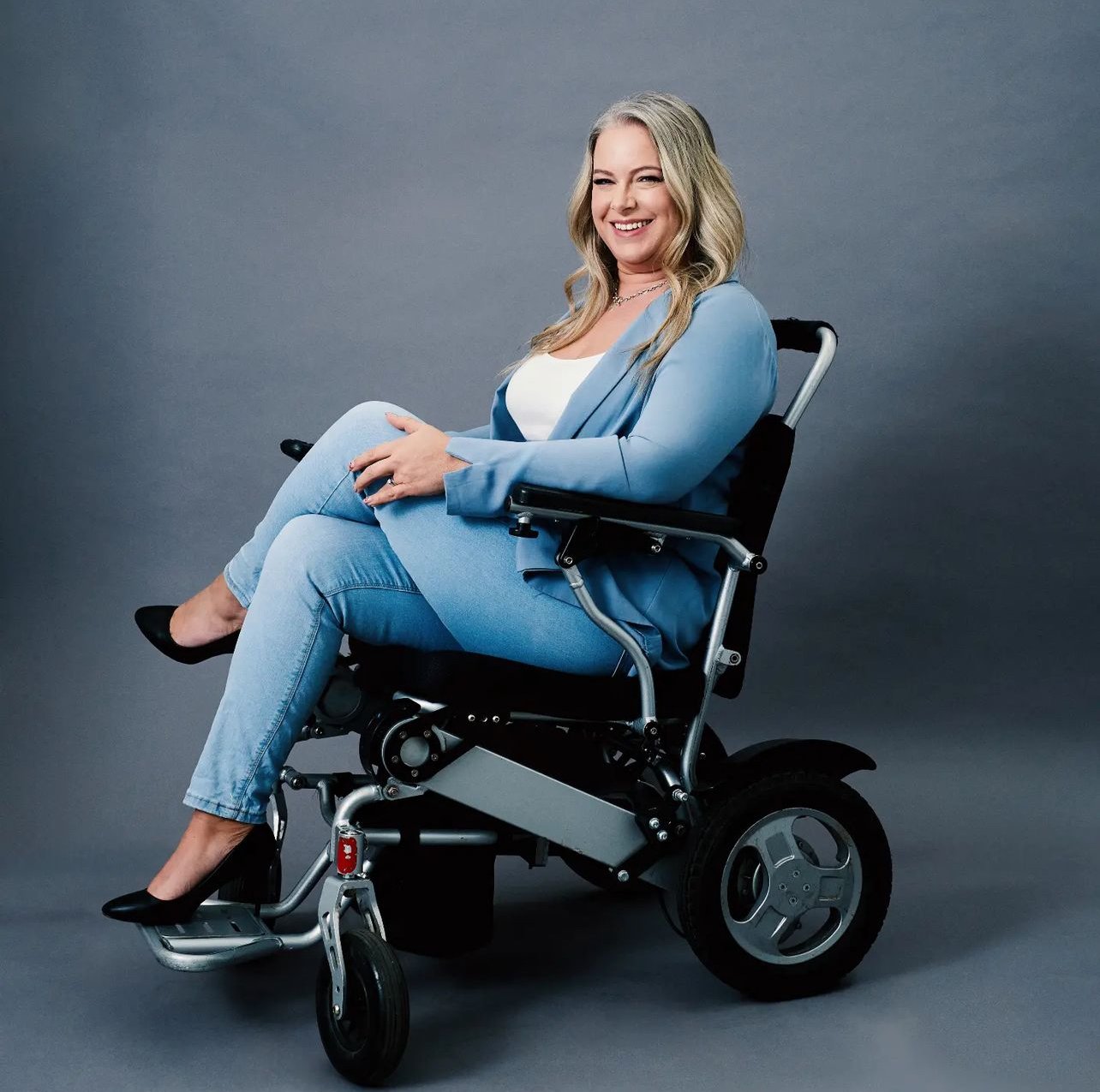
Disabled Grief
I embrace my disabled identity, but the grief from the loss of my career and the life I once knew remains constant. My diagnosis of a genetic connective tissue disorder in my 40s explained the lifelong pain and fatigue I hadn’t realized were abnormal. While I grieve what I’ve lost and what I’ll never experience, I’m working to find peace with my life shaped by chronic illness and disability.

María’s Story
This blog explores the María's experience of self-acceptance and pride in their dual identity as a first-generation Latina and a woman with a limb difference. Growing up, they faced challenges and insecurities, often feeling the need to hide or conform to fit in. Over time, with the support of family and through personal growth, she embraced her unique qualities, finding strength in her cultural roots and resilience in her limb difference. The blog highlights the importance of self-love, the power of perseverance, and the beauty of embracing what makes us different.

Summertime or Showing Time?
As summer arrives, many look forward to baring their bodies under the sun, but for those with disabilities, this season often brings complex emotions. Society’s unrealistic beauty standards and ableist attitudes can make us feel that our bodies are less valid. Yet, the true problem lies not in our bodies, but in the perceptions that reject them.
This piece challenges those perceptions, urging us to embrace our unique beauty and differences, especially during Disability Pride Month. It’s a call to resist societal pressure, to rest when needed, and to show up confidently when we can. Our disabilities and diversities are not obstacles to enjoyment—they are what make us uniquely beautiful. Let’s celebrate our bodies and let them be seen, without shame or hesitation.

Dynamic or Melodramatic? Living with a Disability
Able-bodied people have the luxury of not knowing what that feels like. What it feels like to not trust your own body, to even be scared of your own body.
Many able-bodied people assume disabilities are constant, stagnant, and stable, which is totally not the case at all.

Intersectionality of Identifying as Disabled and LGBTQIA+
I have had a journey on its own based on identifying as bisexual. This experience has been long and one that I have only really come out to my best friend about. I feel much more comfortable identifying as a disabled woman than I am about identifying as bisexual. I have been doing a lot more exploration recently, and I am realising that just because I am married to a man doesn't mean that I can't still identify as LGBTQIA+.

When is the right time to start using a mobility aid?
When is the right time to start using a mobility aid? Is there a right time? I would say that the perfect time is when using an aid increases your quality of life or makes your day-to-day life a little easier.

Breaking the Silence: The Emotional Journey of Living with a Hidden Disability
Exploring the concept of disability involves delving into a complex spectrum of conditions that can manifest in various forms. Visible disabilities, such as mobility impairments, are apparent to the observer. Hidden disabilities, on the other hand, may not be immediately noticeable but can significantly impact an individual’s daily life, such as mental health conditions or chronic illnesses.

Dating as a Woman with a Disability
I don’t care if this partner is for a date, a night, a few months, or a lifetime. Being comfortable, safe, and respected is everything. And we shouldn’t be ashamed of our disability.

Unleash Your Energy: A Spoonie's Guide to Bathing and Dressing
I don't have the energy to wash and dry my hair. I have long hair, too, so the workaround I have for this is to either ask my partner to do it for me (which, as you can imagine, is no spa experience) or I go to my local hairdressers once a week and have a wash and blow dry.

Embrace Your Allure: Tips for Feeling Sexy with Disabilities
One of the most notable changes is the increasing representation of individuals with disabilities in the fashion world. Models with diverse abilities, including those who use wheelchairs, have prosthetic limbs, or have other unique physical attributes, are now gracing runways and ad campaigns. This shift towards inclusivity challenges the longstanding notion of a 'one-size-fits-all' industry. Fashion brands are realizing that showcasing a wide range of body types, abilities, and experiences is not only a moral imperative but also a smart business move, as it resonates with a broader audience.

Disability and Intimacy: A Personal Perspective on Self-Care
The effort and frustration to show that we are equal is multiplied for women with disabilities. Our capabilities are questioned, our abilities are doubted, and our integrity is examined. Due to this pressure and injustice, women are crying out for self-care and intimacy.

Dating With Disabilities
Dating can be particularly daunting for individuals with disabilities due to persistent societal misconceptions. However, it also offers the chance to bond over shared experiences, fostering deep connections and mutual support. As society progresses towards greater inclusivity, the world of dating is becoming more diverse and accepting, allowing individuals with disabilities to embark on unique journeys of love and self-discovery.

Communicating With Your Partner About Intimacy
Navigating intimacy as an individual with a disability can be a complex and challenging journey, but with open communication, understanding, and the right approach, it can also be incredibly rewarding.

5 Tips on Talking to my partner about Intimacy with a Disability
Sex and intimacy are an important part of life and should be an equal, positive, and happy experience for you and your partner. Disabled people, people who live with chronic illness or a disability have the same needs, desires, and wants as non-disabled people. Your emotions and desires don’t necessarily change when you become disabled or chronically ill. I think that this is a massive taboo subject and one that needs addressing.
